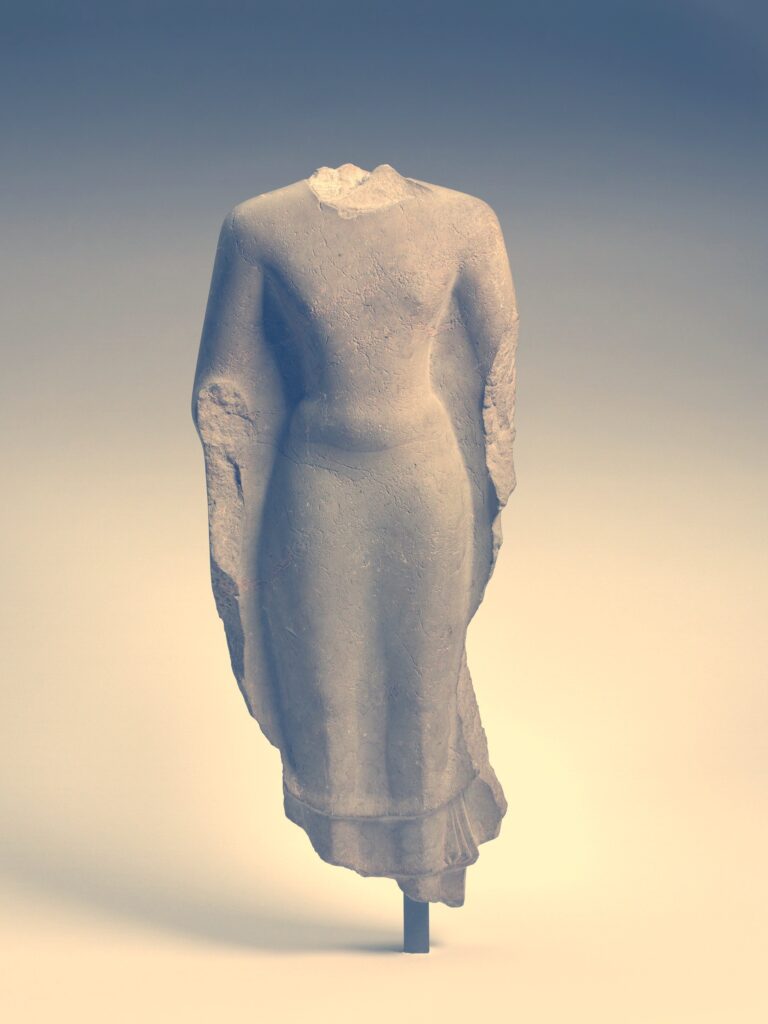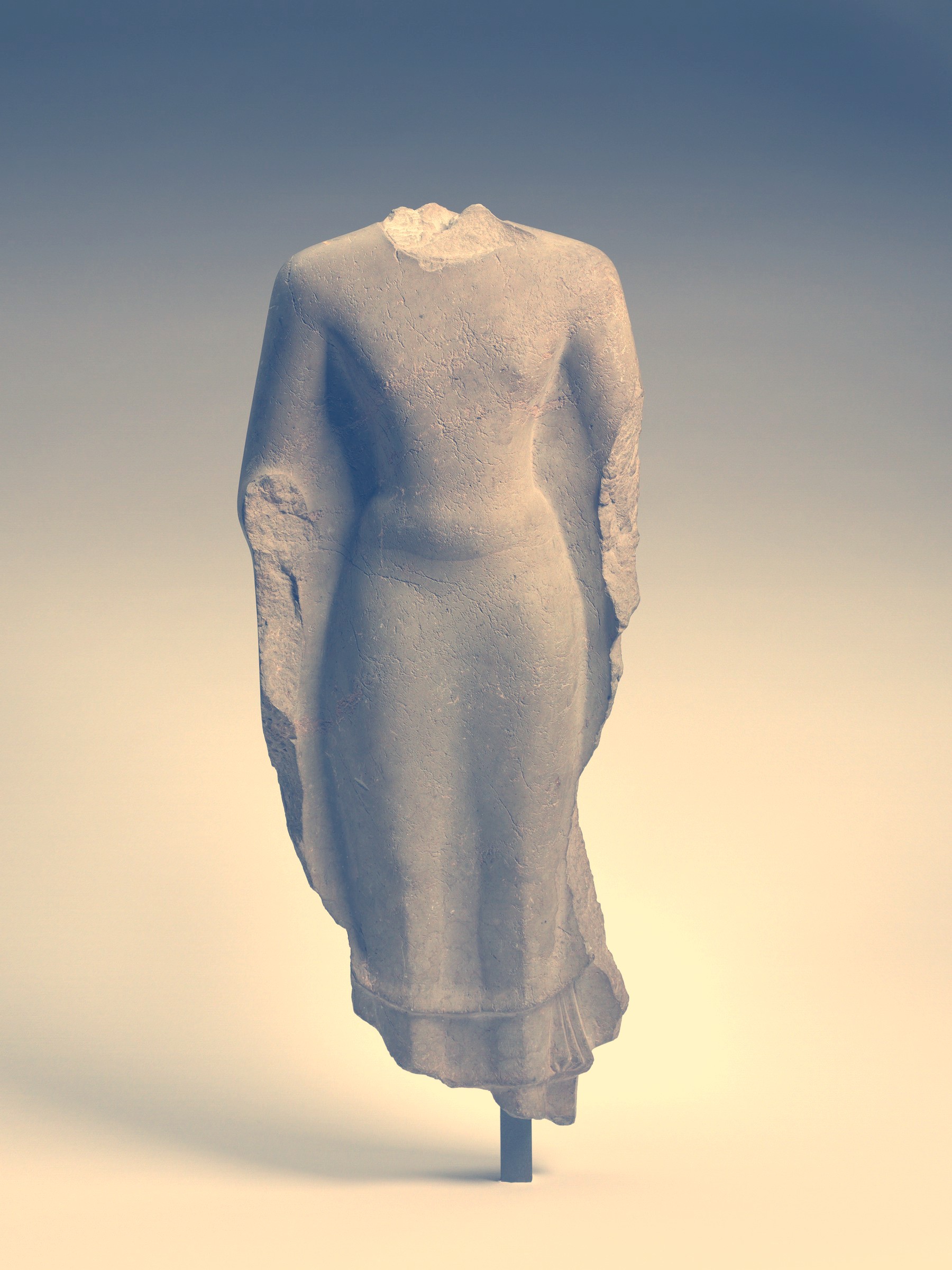It is not easy to find. Tucked, literally, away in an enclave on the second floor, second room, to the left, between the emergency exit and fire extinguisher. Even the more devout of the Harvard Art Museum’s pilgrims, the every-Sunday-at-elevens, could walk past for years and not see it.
I would know. For years of Sundays, I traversed the gallery of East Asian and Buddhist Art and never noticed that sculpture. Until on one of those, just I did, the sunlight fell on it.

Standing Buddha, Dvaravati Period, 7th-8th Century, Thailand. Physical descriptions: Light gray limestone, Mon-Gupta style. Size: Medium.
Not much to look at. A Buddha with no head, or forearms, or lower legs. Barely carved. A fine line incised down the abdomen, subtle ridges at the neck, two impossibly simple curves delineating the waist. The back is gently modelled, but bare. The Buddha’s robe, unadorned. A plain, white torso on a pedestal, that left me out of breath.
Maybe it was the setting; the light flooding the room, the backdrop of sublimated blue sky through the window. Maybe it was the time of day; coffee still warm in memory, the prospect of brunch, later, Sundayly, lazily. Maybe it was the silence of a museum to ourselves,
but I have never seen anything more beautiful than that broken, damaged sculpture.
The expression wabi-sabi is younger than this statue. It came to Japan from China about seven hundred years ago. It is a way of seeing the world, ‘imperfect, impermanent, and incomplete,’ and falling in love with it. One of its definitions: ‘flawed beauty.’
Another is ‘wisdom in natural simplicity.’ Wabi-sabi accepts that nothing lasts, nothing is finished, and nothing is perfect. And that everything is tragically beautiful because of that. The contorted branches of bonsai trees. The rustic and asymmetrical hagi ware of tea ceremonies. The cracks in kintsugi pottery filled with liquid gold, silver, lacquer,
making flaws glow, emphasizing fractures, raising mistakes onto pedestals. ‘’Were it not for shadows, there would be no beauty.’ Celebrating the imperfection of a life lived.
Even the perfect chiseled form of
Michelangelo’s radiant David
squints,
the Venus de Milo
has no arms,
the Liberty Bell is
cracked.
– Fr. Kilian McDonnell, Perfection, Perfection
Perfection is not for me. I want my knees muddy, elbows scraped, the soles of my feet red and swollen, my walking shoes worn in. My wine glasses an odd number and chipped, my china set missing plates, from one too many raucous dinner parties and living room picnic dates. Lips raw and chapped from being kissed hard. Mistakes to turn into stories. Michelangelo’s David does squint. I saw him. And Venus de Milo … is magnificent.
